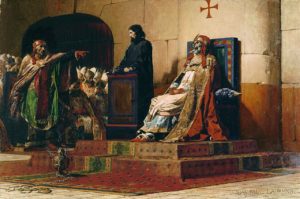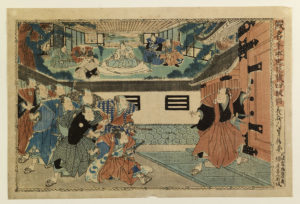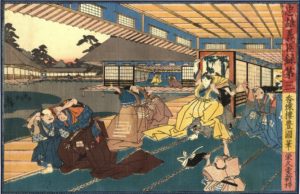In 897 Pope Stephen VI put the corpse of one of his predecessors, Formosus, on trial. The current pope ordered that the former pope’s dead body be dressed in papal finery and put on a throne to stand trial. Stephen VI acted as prosecutor, accusing his predecessor of attempting to have two bishoprics at once and coveting the papacy. The current pope then ordered the Formosus’ body stripped of its finery, the fingers on his right hand be cut off, and his body thrown into the Tiber.
The painting below, Pope Formosus and Stephen VII, is the work of French artist Jean-Paul Laurens and painted in 1870.

Podcast: Play in new window | Download
Subscribe: RSS






